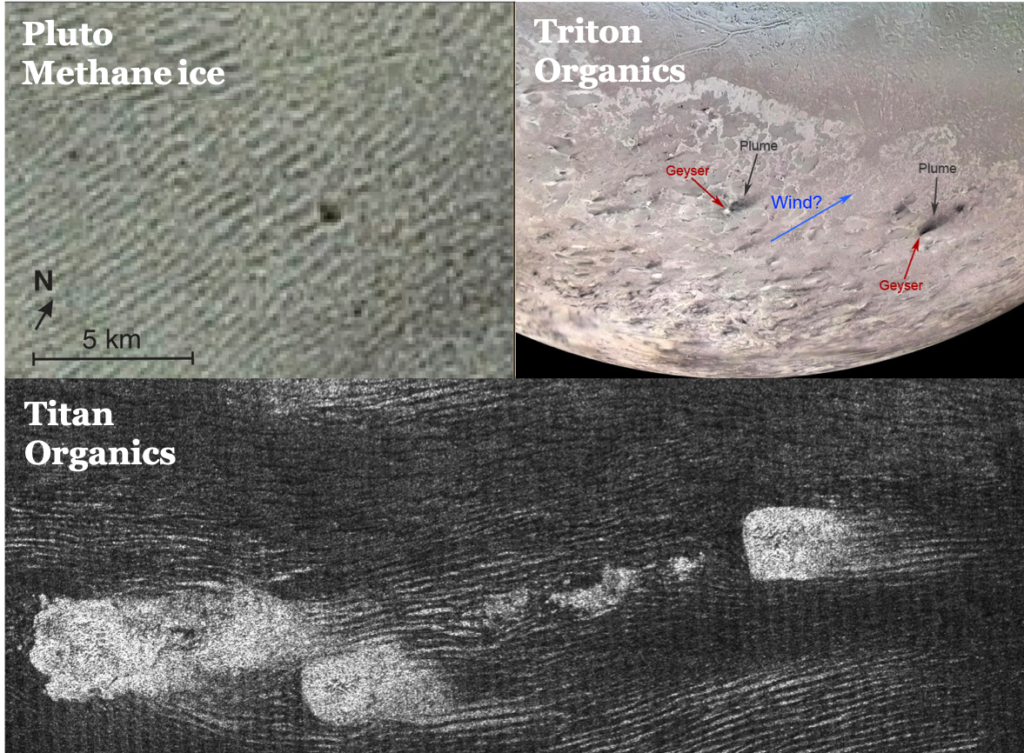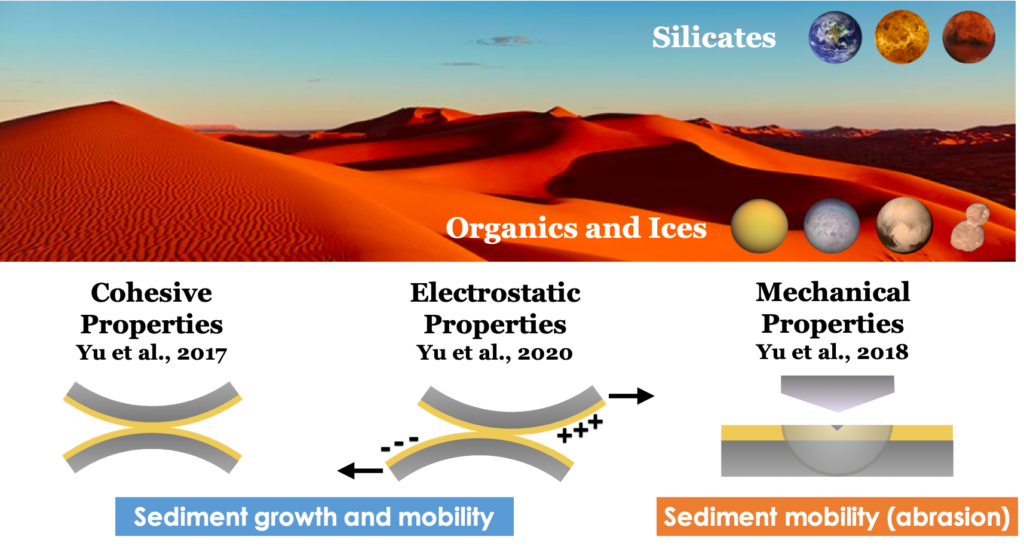Have you been to a sand dune? There are dunes on Earth, but there are also dunes on the surface of other planetary bodies in the Solar System. Dunes are at least a few centimeters in size (sand ripples) and can grow to hundreds of meters tall, but these large-scale landforms are actually made of numerous tiny sand particles that are collectively shaped by winds. The processes that shapes sand particles and form dunes are called “aeolian” (originated from Aeolus, the Greek God of wind) processes.

For those of you who has never been to sand dunes, well, it is not usually the place people go to (unless for touristy/science reasons), as they are not really great places for people to live–the harsh winds, lack of fresh water, danger of sand storms, etc. But dunes are actually very important for planetary scientists. As people who study planets do not often get to go to the planet they study, and data cannot be collected easily–often a costly mission has to be sent and still cannot sample data everywhere like how we do on Earth. Knowing the dunes on surface are helpful, because they are essentially little probes for us. Knowing there are dunes, we know there are sediments/sands on the surface of certain sizes, we know there has to be certain winds that blow and form them. These can all help us understand the surface and the climate of a planetary body.
On icy bodies in the outer Solar System, things get weird. We have seen dunes on Saturn’s moon Titan, Neptune’s moon Triton, and the lonely Pluto. But the environmental conditions (temperature, pressure, atmospheric density, etc.) on these bodies are completely different from Earth. Even the transporting materials are very different. On Earth, the most common sands are tiny quartz particles, or silicates. On these planets, the sands are different–often organics and ices. We have found previously that both environmental conditions and material properties can change sand movements, so why do these planetary bodies have dunes that looks just like the ones we see on Earth?

My research focuses on studying the properties of these exotic sands on Titan, Pluto, and Triton that are relevant to aeolian processes, including their cohesive properties, mechanical properties, and electrostatic properties. By comparing the properties of these exotic sands and Earth sand, we can know the similarities and the differences of aeolian transport between icy bodies and Earth. So, I am essentially doing remote calibrations to make our little probes (the dunes) work better to “measure” the climate on these distant bodies.

I have measured the cohesive properties of the organic sand analogs on Titan and found them to be much stickier than the silicate sand on Earth (see my paper here: link, no pay wall version: link). This means a higher wind speed is needed to move the sand particles on Titan. We previously think a lower wind speed is needed to move the dunes, actually probably more is needed, as the sand is stickier–this would change how we understand the climate on Titan.
A dune is made of thousands of tiny sand particles, and when they got moved by the wind, things actually get pretty violent. Sand grain could rub on each other on the surface and crash into each other in the air, all these could lead to the build-up of electrostatic charges. Since larger particles (closer to the surface) and smaller particles (higher up in the air) tend to build-up opposite charges, eventually these violent actions would develop strong electric field. This seems very intimidating for planetary scientists–as this means surface probes could get destroyed. But do these exotic sand particles charge as well as the silicate sand particles on Earth? I did some electrostatic measurements by rubbing two single particles, one set made of the organic Titan sand analog, and one other set made of regular Earth silicate sand. Weirdly, the organics do not charge each after the most violent rubbing the instrument is capable of, and the Earth sand charges much much easier. It is still a mystery why the organics do not develop much electrostatic charges, but we feel better about for our probes, they will likely evade the deadly electric sand storms. My paper can be seen here (paywall) and here (no paywall).
Another aspect that got us interested is that, quartz sand, the common sand on Earth, is actually common for a reason. There are many types of rocks that can be eroded to form small sand-sized particles, but why is quartz the most abundant sand on Earth? It turns out that quartz is built to “serve” as sand, it is very strong in terms of mechanical properties, very hard–so even after numerous grinding, they can still remain as “sand-sized”. The importance of remaining sand-sized is that, once the particles get too small, it is actually quite hard to move them–think about when you get back from the hike, it is not that hard to shake off the big grains from your gears, but the small nasty dust particles would stay. A sand has to be built strong to remain sand, but does sand on other planetary bodies have the build to remain sand particles? To understand this, I measured several relevant mechanical properties of the Titan sand analog materials and a few common Earth sands. We found that the Titan sand may not have the best “build”, it is much softer than quartz, and even softer than some of the softest sands on Earth. We believe it is likely they will be grind to dust easily and will not be able to transport as far as sand on Earth. This has huge implications on the origin of the Titan sand, as the dunes are mostly located in the equatorial regions, so it is likely that the sand particles are formed close to where the dunes are located. See a news press about this study on Universe Today: link. My paper can be found here (paywall) and here (no paywall).
So far, my work has been focused on sand on Titan, but my goal is to characterize sands on other icy bodies, Triton, Pluto, comets, and even most distant bodies in the Solar System. Knowing there are dunes, know them better, and understand planets better.